BASpi – Raspberry Pi based BAS controllers
reach the cloud, open minds, and infinite possibilities
Zach Netsov,
Product Specialist,
Contemporary Controls
Contributing Editor
|
May 2019 |
[an error occurred while processing this directive] |
|
BASpi – Raspberry Pi based BAS controllers reach the cloud, open minds, and infinite possibilities |
Zach Netsov, Product Specialist, Contemporary Controls Contributing Editor |
| Articles |
| Interviews |
| Releases |
| New Products |
| Reviews |
| [an error occurred while processing this directive] |
| Editorial |
| Events |
| Sponsors |
| Site Search |
| Newsletters |
| [an error occurred while processing this directive] |
| Archives |
| Past Issues |
| Home |
| Editors |
| eDucation |
| [an error occurred while processing this directive] |
| Training |
| Links |
| Software |
| Subscribe |
| [an error occurred while processing this directive] |
The BASpi is a series of building automation controllers powered by the popular Raspberry Pi micro PC. At Contemporary Controls, we’re huge proponents of the concept of “open control” and built our BAScontrol Series on the idea of open software and free programming tools. The BASpi series was the next logical extension of that idea. The BASpi series has been a hit with both enthusiasts and professionals alike since its initial release in March 2018. It has been a little over a year now and interest in open controllers such as the BASpi is only growing stronger. The building automation community is more accepting to open technologies than ever before, and we like to help the trend grow. Open technologies trigger people to open their minds, which in turn produces creative and effective solutions.
open controllers = infinite possibilities
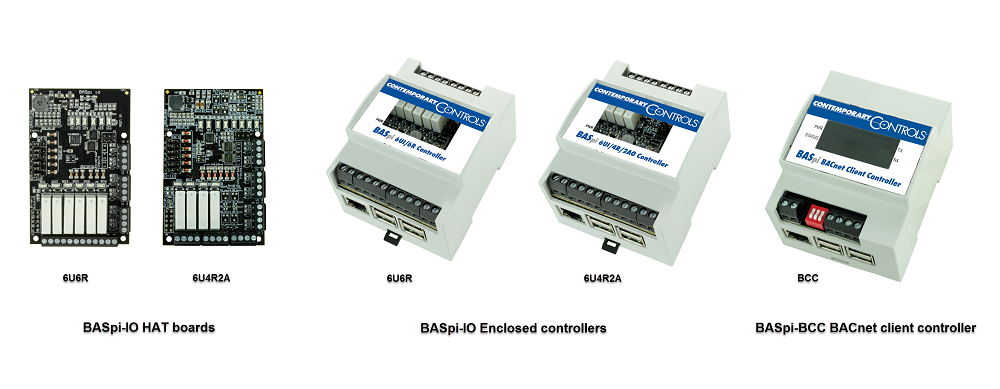
It
all started with the first DIY automation open circuit board HAT design
for Raspberry Pi. This first design is a 6-universal input, 6-relay
output, BACnet server, Sedona-programable board which mounts on top of
the Raspberry Pi’s GPIO header as a HAT (Hardware Added on Top). With
the installation of our free BASpi firmware and our HAT/daughterboard,
you can turn your Raspberry Pi into a powerful BACnet-networked,
Sedona-programmable building automation controller with resident web
pages for monitoring and configuration and free software tools. It was
revolutionary in the sense that no one had used the Raspberry Pi in
building automation before and no such boards were available on the
market. People got excited and started installing these all over the
place – from home automation projects to commercial applications. We
thought, why stop here? There is now customer demand for more
controllers built on open technologies. We have expanded the BASpi
family with the addition of fundamental features required in building
automation such as 24VAC/VDC power input, DIN rail mounted enclosure,
large screw terminals, and capacitor-backed Real Time Clock for
maintaining schedules. On the horizon are a few more models which open
up even more possibilities to open control proponents. These new BASpi
models incorporate feature sets currently in demand such as cloud
connectivity, weather API, REST API, MQTT over SSL, and Haystack. The
new additions to the BASpi series include a second open circuit HAT
board for Raspberry Pi (6U4R2A) which is very similar to the first
design with the difference that it now allows users to drive 0-10V
output signals thanks to its 2 analog outputs in addition to its 4
relay outputs.
The
BASpi evolution continues and the features pile up with the
introduction of the BASpi Enclosed series. These are the 24VAC/VDC, DIN
rail-mounted controllers with larger screw terminals for convenient
installation. These two BASpi-IO 12-point controllers in DIN rail
enclosures differ only by I/O type and are fully web page configurable
with BACnet Server, weather API, REST API, email alerts, secure cloud
connectivity using MQTT over SSL, and Haystack tagging for their 12
physical I/O points and 24 Virtual Points.
This is where the road comes to a fork.
The
BASpi-BCC (BACnet Client Controller) is different. This “controller”
does not have any on-board IO, but thanks to its BACnet Client
capability, 192 Virtual Points, and special NetV (Network Variable)
Sedona components, it can read and write other BACnet device points on
the network. The BACnet client plus the NetV components allow you to
treat any BACnet point on the network as a Sedona programmable point in
the BASpi-BCC’s wire sheet.
Sedona NetV component reading 4 Analog Input values
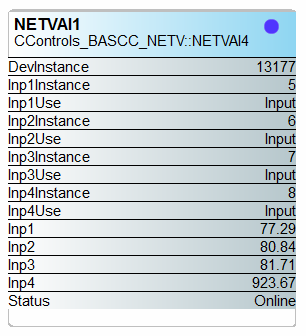
In
addition, the BCC can support multiple schedules thanks to its real
time clock, it can send email alarms, and it can push points up to the
cloud for trending and dashboards. This puts the humble BASpi-BCC in
the supervisory device category! Customers would be able to read points
in from other BACnet devices, perform logic on these points, write
commands out, schedule, alarm, and connect to the cloud for trending
and dashboards with this one small device. Other client services such
as BACnet Time Synchronization are also available in the BCC. The BCC
has a dual gateway functionality as well - as a BACnet to Haystack
gateway as well as a BACnet to MQTT/SSL (commonly used cloud
connectivity protocol).
Azure IoT central dashboard
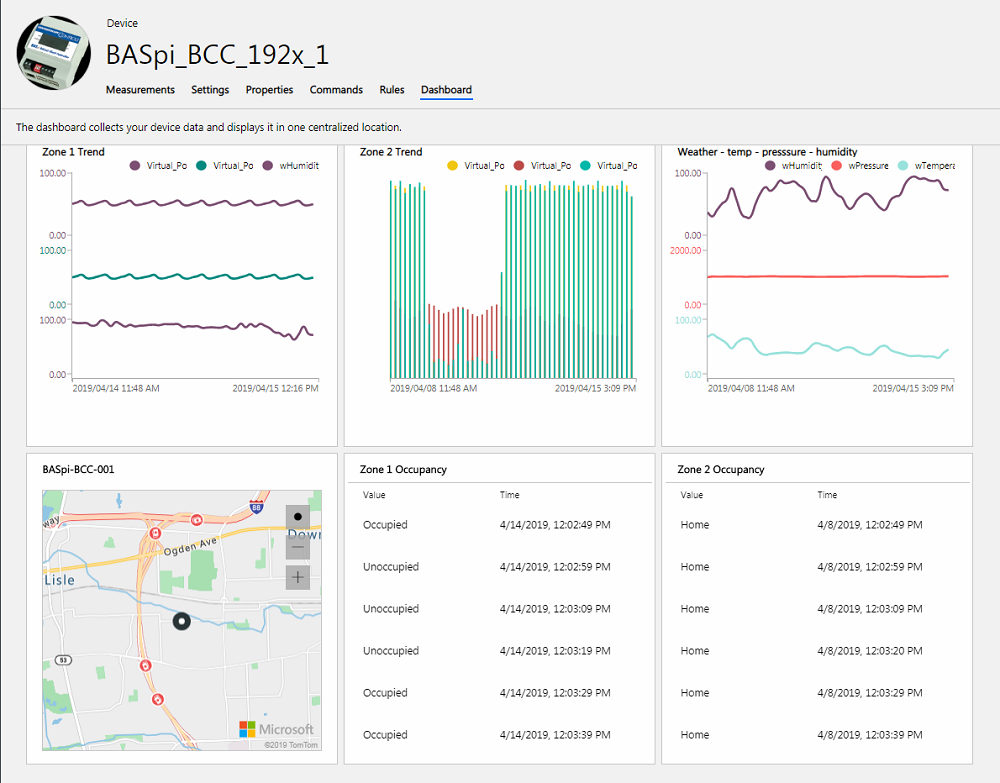
The
BASpi currently provides Azure cloud connectivity out of the box. The
Azure cloud gives users great flexibility and ease of setup in their
“IoT Central” portal. Provisioning the BASpi in Azure IoT Central is
very simple and straight forward, even kids can do it - they actually
have. Currently, Azure allow up to 5 devices with modest bandwidth to
connect for free! Thanks to the BASpi’s simplified cloud configuration
web page, provisioning is a breeze. Simply create an account with Azure
IoT Central, create a new device in the portal, copy the Scope ID,
Device ID, and Primary Key and paste them into the respective fields in
the BASpi’s cloud configuration web page. Set your Poll Rate, check off
the points you want, and you are ready to push these points to the
cloud or receive commands on points from the cloud.
Setting
up the weather API service is even simpler. Most weather services
provide an API key and XML data payload the BASpi can work with. One
open and free option is the https://openweathermap.org which provides free
weather services. The parameters passed by the weather service such as
temperature, humidity, pressure, etc. can be mapped to the BASpi’s
Virtual Points and used in its wire sheet logic or passed to other
devices on the network.
Cloud and weather configuration pages:
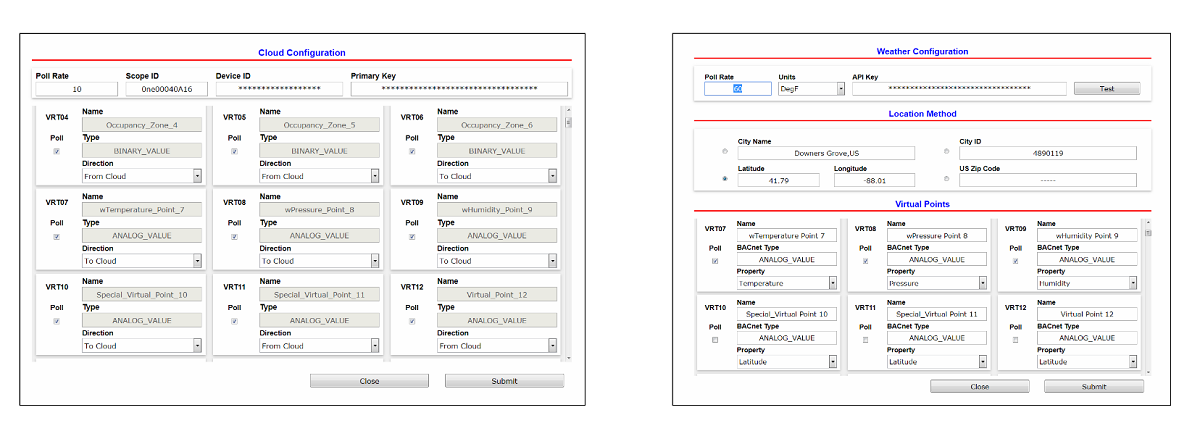
Once the BASpi is provisioned in the Azure cloud, customers can create measurements and trend all of its points in the cloud. Dashboards of points can be created using various graphical methods and points such as occupancy command, zone set point, and other parameters of interest can be written to the BASpi from the cloud.
Azure
IoT Central measurements/trends
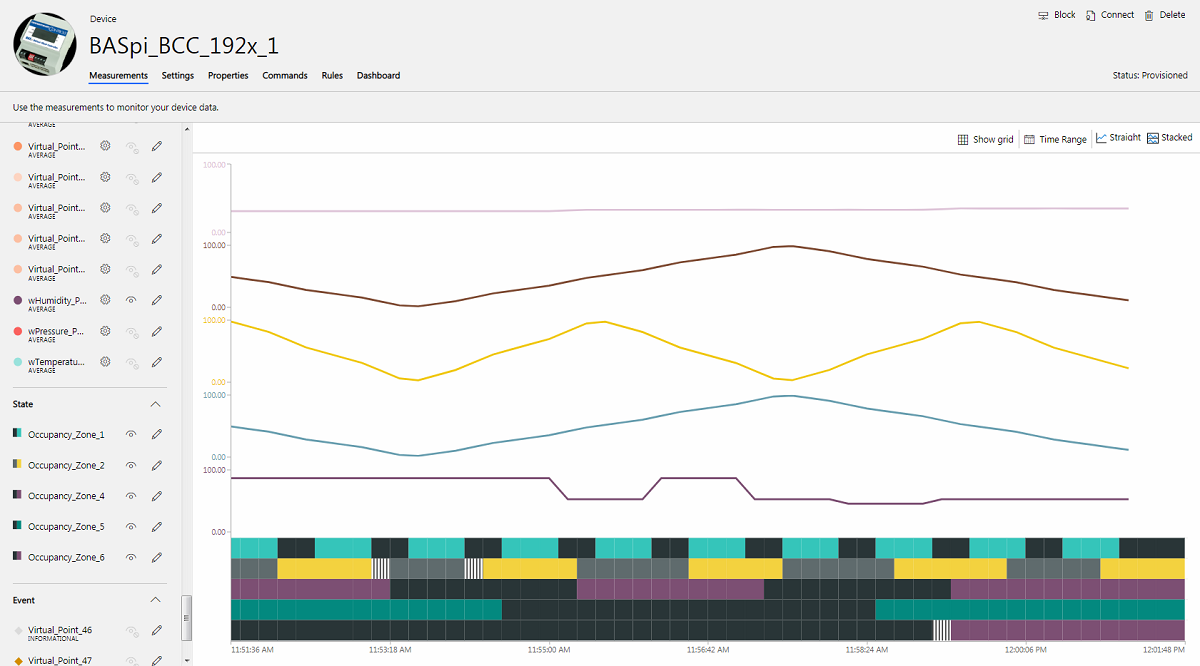
The BASpi REST API allows advanced users or developers to utilize the BASpi’s capabilities in custom applications such as interfacing with legacy servers, mobile applications, third party applications, cloud servers, web servers, and really anything which supports REST. The BASpi REST interface presents a path-oriented method of reading and writing values from/to the BASpi. All data points within the BASpi are accessed as if they are part of an XML document. Each I/O or virtual point is represented by an 'object'. You can read and write BASpi values using the HTML POST method with an XML data payload.
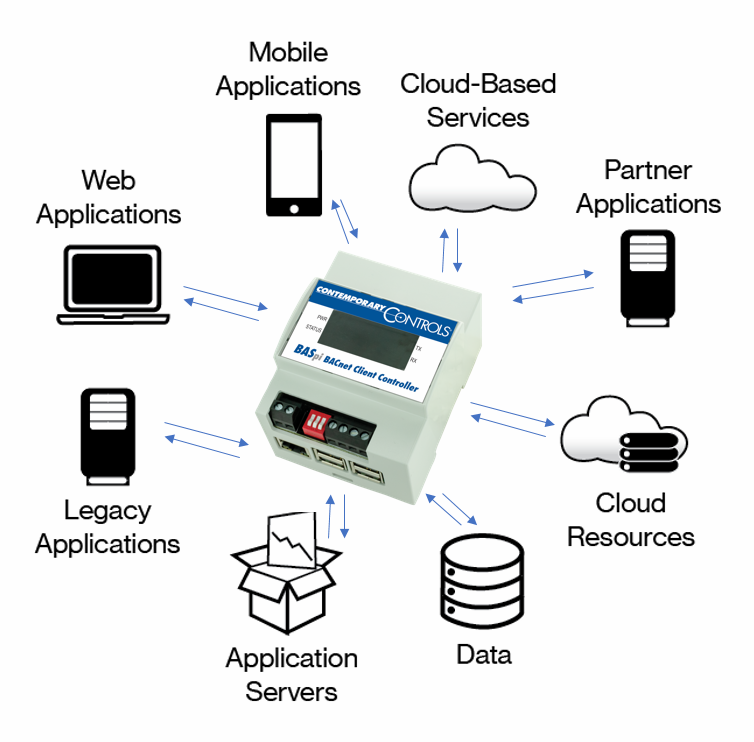
The complete BASpi series will be showcased at the 2019 Haystack Connect May 13-15 in beautiful San Diego, California. Be sure to catch our BASpi presentation in the General Session & Pitchfest track – “BAS Controller With Haystack Powered by Raspberry Pi”. See you there!
https://www.haystackconnect.org
[an error occurred while processing this directive]
[Click Banner To Learn More]
[Home Page] [The Automator] [About] [Subscribe ] [Contact Us]